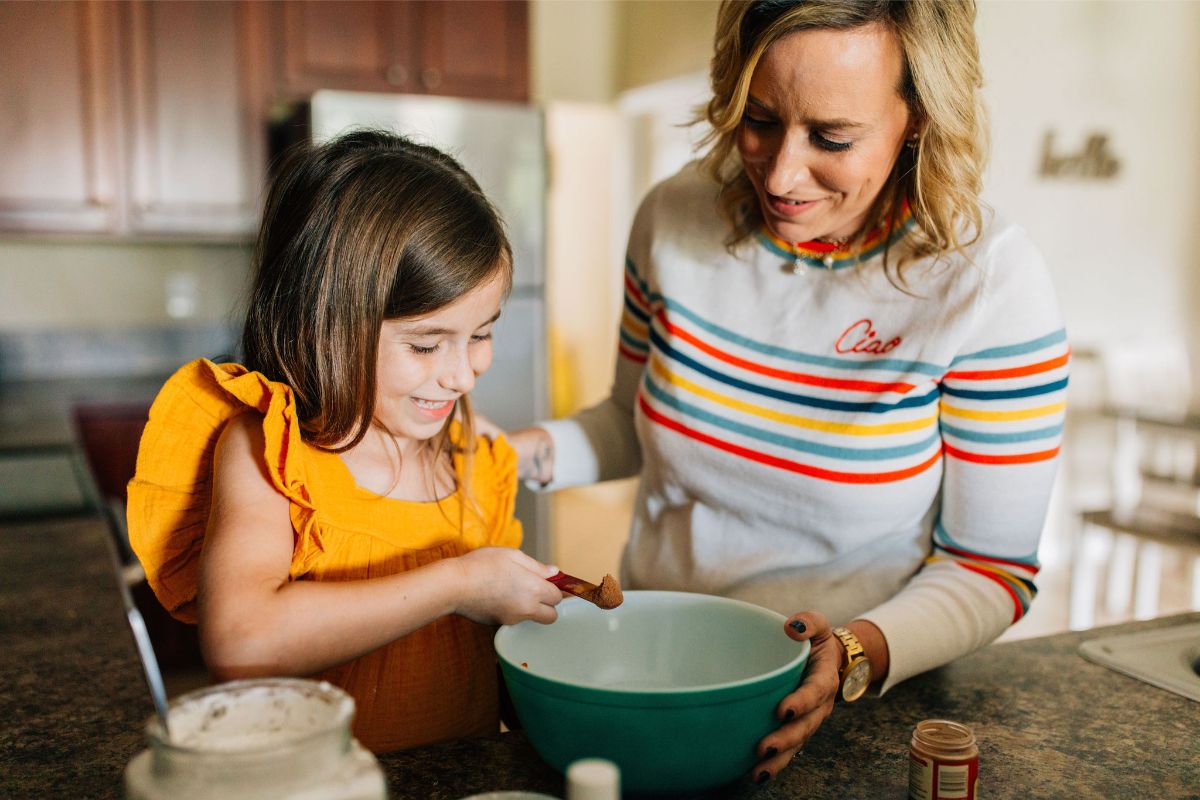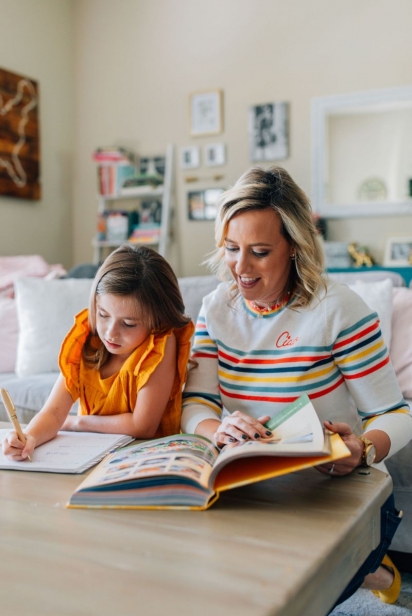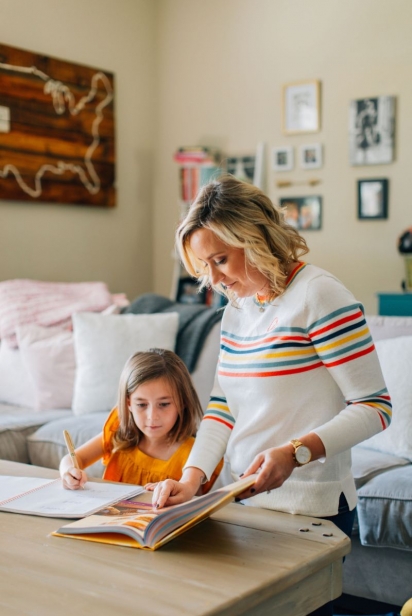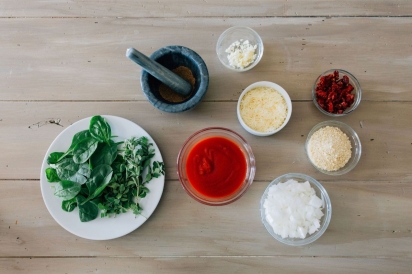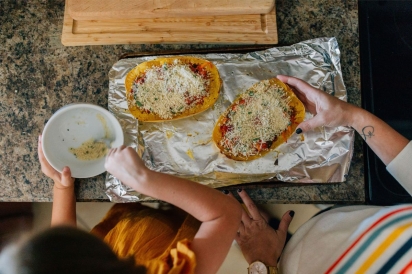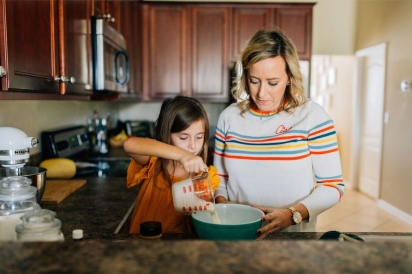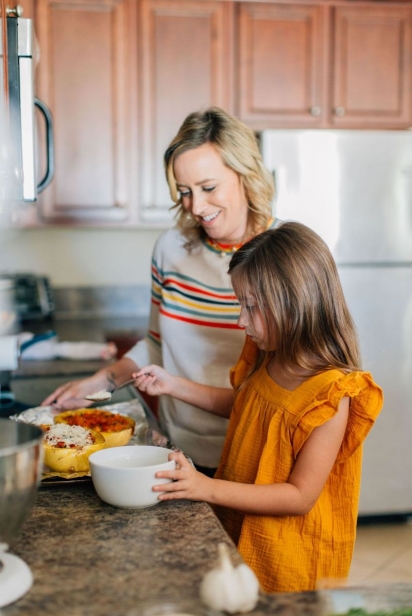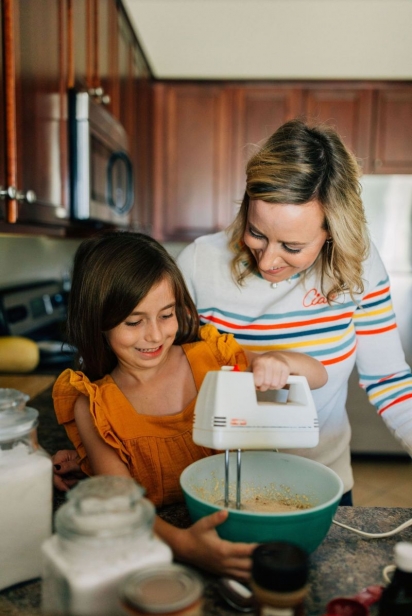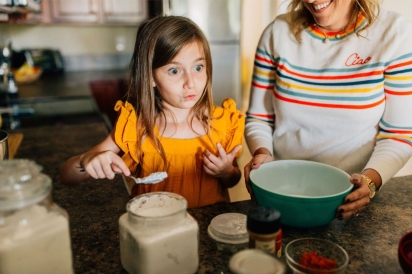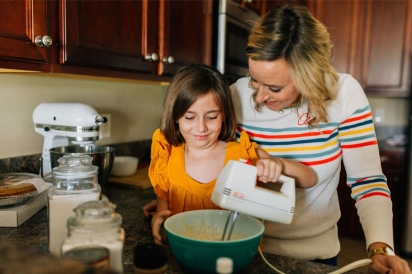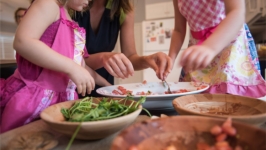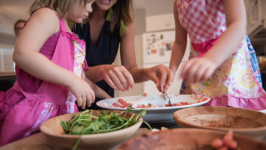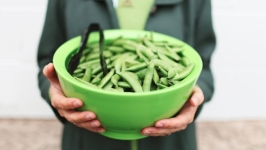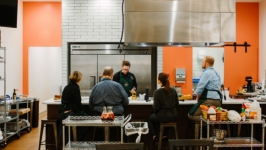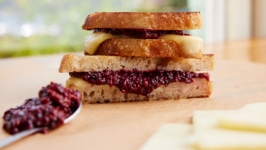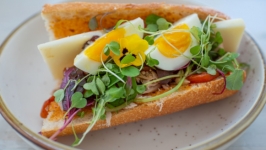Let Kids Help in the Kitchen
I come from a long line of women, all self-taught, who were remarkable chefs and bakers. I remember countless hours in the kitchen as a young girl, watching and learning from my grandmothers. They'd committed an endless number of recipes to memory. Patiently, they would show me each step of the process and never once got irritated if I did it wrong. Although I didn’t inherit the baking gene from my mother, the joy of being in the kitchen passed down by my relatives helped shape my own love of preparing meals.
Now, as a mother with two young daughters, it’s my turn to use those memorized recipes to teach my children to cook (with the hope that I have the same level of patience as my grandmothers). Holiday preparations may seem stressful and daunting enough without the additional element of children “helping” in the kitchen. But involving the kids can be a great introduction to family food traditions while providing essential cooking skills. When you break down the tasks, from menu creation to shopping, chopping and cooking, you will find some level of participation for kids at almost any age. This recipe for Greek Stuffed Spaghetti Squash is is a great way to get young helpers involved in meal prep, with easy steps for all skill levels.
Pull out the step stool, have plenty of towels on hand and enjoy the time spent together. Try these tips and tricks for getting young helpers involved this holiday season or throughout the year.
BUY IT TO TRY IT
Let kids help plan the menu, then go grocery shopping together to gather the ingredients. Talk about where food comes from and what ingredients may be in season. If an unfamiliar fruit or vegetable is spotted, buy it and include in the holiday meal as a way of introducing new foods to youngsters - research shows they are more likely to want to eat the meal if they help select and cook the ingredients.
UNDERSTAND THERE WILL BE A MESS
Anytime anyone is in the kitchen, there will be a mess to clean up. Add in still-developing motor skills and short attention spans and the mess is bound to be more substantial. If you walk in with the mindset of “it’s going to get messy and that’s okay,” you won’t feel as upset or frazzled when the cake batter is smeared on the ceiling and the dog is now licking the spilled buttermilk off the kitchen tiles. Everything will be cleaned up eventually!
THINK LIKE A CHEF
Mise en place. Translated, this French term means “everything in its place.” In other words, ingredients are prepped and tools are ready before you begin assembling a dish. This is especially helpful with younger children who may not be ready to handle a knife. Having some of the prep work done will keep them engaged as dishes are assembled and cooked. Making a pie? Have the crust done. Need a ¼ cup of diced onions for a sauce? Put them in the bowl ready to be dumped in. This keeps things organized for you and easier for children to be equipped to help.
TELL STORIES AS YOU WORK
Kids love to hear about what you did when you were their age. Tell them about helping your grandmother make a certain dish, or what you loved to eat for Sunday morning breakfasts. It also helps pass time waiting between steps or during clean-up.


